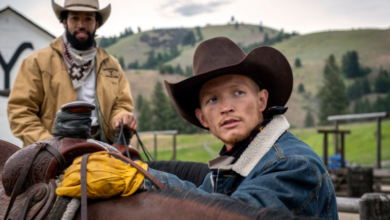In an article titled “What Elsa’s Voiceover Really Meant in the 1923 Premiere,” the author explores the significance behind a voiceover spoken by Elsa Lanchester during the 1923 premiere of the silent film “The Constant Woman.” The voiceover, which was recently discovered and has since caused intrigue among film enthusiasts, sheds light on the true intention behind Elsa’s character and the underlying themes of the film.
The article begins by setting the context of the discovery, emphasizing the surprising nature of finding a voiceover in a silent film. The author highlights the importance of this finding, suggesting that it challenges viewers’ preconceived notions of silent films and their traditional reliance on visual storytelling.
Moving on, the author delves into the content of Elsa’s voiceover. They note that Elsa’s voice breaks through the silence of the film during a pivotal moment when her character, known as Elinor, confronts her husband about his infidelity. The voiceover, spoken in a calm yet firm tone, reveals the depths of Elinor’s pain and her realization that society expects women to silently endure such marital betrayals.
The article then explores the effects of this voiceover on the interpretation of the film. It argues that this newly discovered audio adds complexity and depth to Elinor’s character, transforming her from a passive victim to a symbol of women’s struggle for agency and equality. By giving Elinor a voice, the film challenges traditional gender roles and questions the societal expectations placed on women in the early 20th century.
Furthermore, the author suggests that the voiceover also serves as a commentary on the limitations of silent films as a medium. It argues that the absence of dialogue in silent films often resulted in a lack of nuanced representation of women’s experiences. By adding this voiceover, the film breaks free from these limitations and gives voice to the silenced stories of countless women during that era.
The article concludes by emphasizing the significance of this discovery. It suggests that the voiceover not only changes our understanding of the film but also highlights the importance of reevaluating other silent films for potential hidden voices and narratives. It calls for a reexamination of the entire silent film genre, urging scholars and enthusiasts to consider the untold stories hidden within these films and the societal context in which they were made.
In summary, the article explores the significance of a recently discovered voiceover in the 1923 premiere of “The Constant Woman.” It argues that the voiceover adds depth and complexity to Elsa’s character, challenges traditional gender roles, and questions societal expectations placed on women during that time. The article also suggests that this finding prompts a reevaluation of silent films and calls for uncovering other hidden voices and narratives within the genre.






